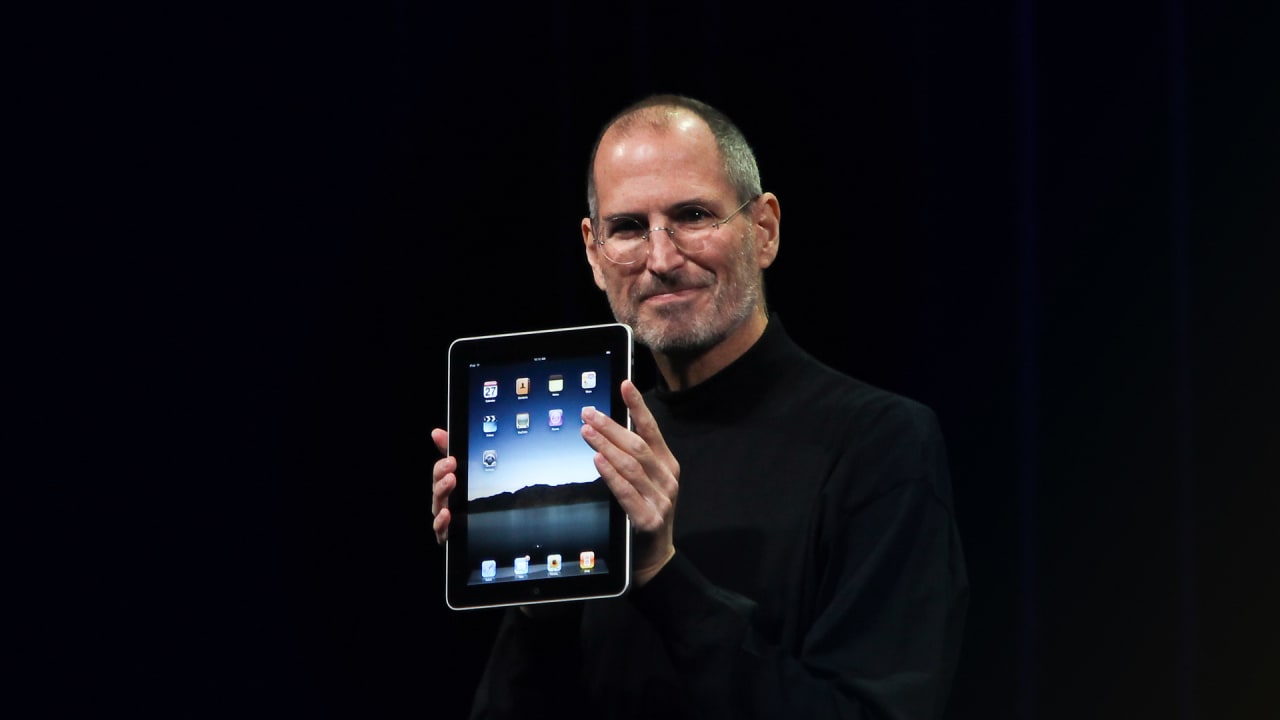
On April 3, 2010, Apple CEO Steve Jobs took the stage for one of his famously dramatic product unveilings. The room went dark, and Jobs put up a picture of an iPhone and a MacBook laptop, with a question mark in between. “Is there room for a third category of device in the middle?” Jobs asked the audience.
He dismissed past efforts to fill that space, saying they were just bad laptops. But, he said, there had to be a place in our lives for a device that is “so much more intimate than a laptop and so much more capable than a smart phone.” With that, he showed the first iPad.
And then Jobs uttered the magic words – the words that showed Apple had thought about this new product in a new way: “iPad creates and defines an entirely new category of devices that will connect users with their apps and content in a much more intimate, intuitive and fun way than ever before.” Steve Jobs was teaching us how to think about and value Apple’s new innovation. Not only did he launch a new product; he also designed a new category that Apple dominates.
Companies, products and brands don’t live in space. They live within a container in a customer’s or user’s mind. That container is a category.
Categories are powerful because they are the way customers relate to products. Customers use categories as mental “tags” for products and companies. These tags make it easier for people to understand new products and offers.
By understanding what classification products are in, customers create mental priorities of what they need to buy and what technologies they need to achieve certain results. Categories have become the key to establishing a hierarchy of needs in the minds of a market.
People prioritize all technology categories into three buckets:
1. Must have
2. Nice to have
3. Not interested
Categories work because it’s the way our brains work
The category as an organizing principle snaps beautifully into research on the brain and cognitive biases, described by Nobel Prize winner Daniel Kahneman in his book, “Thinking Fast and Slow,” and by other brain scientists. It turns out that our brains are governed by more than 50 different cognitive biases that push us toward decisions based not on facts and logic but on instincts that can be at odds with facts and logic. It’s a shortcut system in our brains – a way to make decisions faster and easier, especially when overwhelmed by too much information, as we most certainly are now.
Category design
The company that designs a space is best positioned to dominate it. The ability to shift markets to embrace new products and innovations is arguably the most important skill in business. No category, no innovation, no revenue.
Category design goes beyond traditional thinking about marketing and positioning. It is a cross-functional discipline used by savvy CEOs to mobilize an entire company to create and dominate markets.
Set the agenda
The legends in the technology business don’t just market, position and sell their products and features. They set an agenda. They make sure that the world understands why their breakthrough innovations matter. They educate people about why they should consider doing things in a new way with a new technology. They intuitively lead their markets by teaching customers why they should abandon old ways and embrace new ways. Just like Steve Jobs did.
For over 15 years Marc Benioff has evangelized cloud computing with his “no software” mantra. Great innovators educate the market to see the world the way they do. That’s category design.
Shift people from the old to the new
Once customers discover how a new category of technology can solve a problem in a new way, they shift from the old to the new. As momentum builds, a category king emerges and the space hits a tipping point. When this happens at scale, customers literally stand in line to buy. This is what Apple did to BlackBerry, what Netflix did to Blockbuster, what Salesforce did to Siebel and what Workday is doing to SAP.
Category designers go beyond traditional marketing, positioning, product management and sales strategies and proactively condition a market to view their new innovations as:
1. Different than what has come before
2. Solving a big, urgent problem in a new way
3. Worthy of increasing investment
When the right company with the offering attacks the category at the right time, POW. Facebook, Google, Uber, Salesforce. It’s getting the synchronization right that matters. If customers don’t understand or value the category you’re in, it doesn’t matter how legendary your technology is. That’s why we believe CEOs can no longer leave the design of their category to chance.
